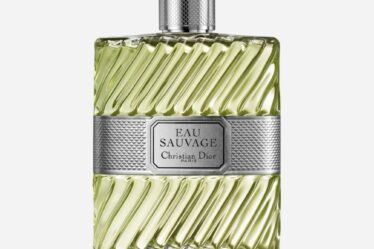
The fashion industry has no shortage of buzzwords; chief among them is “buzz” itself.
Online chatter is highly prized in fashion, and for good reason: the ability to get people talking can make or break a brand. In recent years, a cycle has emerged. Brands do something meant to start a conversation, whether it’s putting on a runway show that seems to be more about getting attention than presenting clothes; dressing celebrities in their most polarising pieces; or churning out products meant to provoke. Usually, the more outlandish or unexpected the move, the more attention it receives, on social media and in the traditional press. Likes and shares, and metrics like earned media value surge. That is, until people move on and brands are forced to come up with what’s next, each time, trying to top their past.
The whole thing is understandably seductive.
“Buzz implies … the brand isn’t pushing the story down your throat. People are reacting and evangelising on your behalf,” said Tony Wang, founder of luxury consulting firm Office of Applied Strategy. “If you can unlock it, it’s infinitely more scalable than paid media.”
Still, it can be hard to tell whether much of that noise has meaning, or a lasting impact.
From some vantage points, buzz’s connection to generating long term sales and desire looks tenuous. Brands who relied on eye-catching virality throughout the 2010s — most notably, Balenciaga and Gucci — have embraced a more subdued, heritage-driven approach in the midst of sales slumps. Meanwhile, the labels thriving in the middle of a wider luxury downturn, like Hermès, Brunello Cucinelli and Prada, put less focus on attention-grabbing stunts.
Banking on this sort of attention is a risky endeavour in an environment where it’s more and more difficult to make moments that stand out. In turn, many brands are re-evaluating their strategies when it comes to how they build and measure buzz — and what exactly it’s worth.
“Buzz is awareness, amplification and excitement,” said Lucien Pagès, founder of his namesake communications firm. “You need to have it, but you cannot live on buzz.”
Buzz Doesn’t Conquer All
In the past, talked-about moments were more widely looked at as a happy accident. But today, behind every conversation-starter is a carefully orchestrated plan.
Manufacturing buzz — whether an isolated splash or plugging into particularly talked-about moments like the Cannes Film Festival or the Met Gala — is high on brands’ agendas, said Guillaume Delacroix, the founder of strategy and communications firm DLX.
A viral moment can push a small label to the next level. Coperni’s Spring/Summer 2023 show — where the brand sprayed a liquid fibre dress onto Bella Hadid with materials company Fabrican — catapulted the brand from an insider favourite in its local market to global recognition, said Stefano Martinetto, founder of growth and development platform Tomorrow, which is an investor in the brand.
In the immediate aftermath, viral moments can move items like handbags and shoes, attract a new audience or for young brands attract well-funded collaborators and sponsors for their next show, said Gia Kuan, founder of her namesake New York-based PR firm. After Beyoncé sat front row at client Luar’s Fall/Winter 2024 show in Brooklyn, for example, it saw a sales bump in new regions, she said.
But making it the primary goal can make brands reliant on quick hits of attention that don’t have much meaning.
“In the conversations I have with my clients, it’s just ‘focus on who you are and on having the right positioning and a unique offering,’” said Delacroix. “You cannot build brand desirability on buzz … it lasts the amount of time an Instagram story is up.”
Plus, some may be over-prioritising metrics like earned media value, used by firms including Lefty, Creator IQ and Dash Hudson and media impact value, Launchmetrics’ proprietary measurement, as indicators of overall success. Both use different methodologies to put a dollar value on conversation online and in the media, linked back to what a marketer would’ve had to pay if the placement had been paid.
That data is useful for figuring out what talent to work with, or what event to do a push around, said Lissy von Schwarzkopf, chief business officer of Karla Otto. Share of voice — the percentage of chatter a brand owns in a particular channel — is important because it has a correlation to market share and can provide insight into a brand’s trajectory, said Conor Begley, Creator IQ’s chief strategy officer.
EMV does indeed help a brand discern who is talking about it and the volume of the conversation. But critics say such metrics provide little insight into what people are actually saying and focusing too much on them can lead brands to lose sight of the big picture.
“Metrics can make you make a mistake,” said Pagès. “You get too addicted to things that will easily bring you exposure, not equity or inspiration.”
Even the M&A market is tempering on the idea of buzz, said investor Ariel Ohana, as a more precarious financial market refocuses priorities.
“Right now many buyers are saying ‘give me legacy brands, give me brands that have built perennial brand equity.’ There have been periods of time where people were only looking for what’s the most recent and buzzy brand around,” said Ohana.
The Weight Buzz Carries
For any brand, there’s a line to be walked when it comes to attention. Too little of it, and it doesn’t create desire, too much and it risks oversaturation. With that in mind, reaching the right consumer is imperative, said Mario Ortelli, managing director of luxury advisory Ortelli & Co.
“Brands need to focus on creating connectivity with their consumers. That’s really key in thinking about whether they need to generate a lot of buzz,’” added Alison Bringé, chief marketing officer of analytics platform Launchmetrics. “Is everyone your consumer? Probably not … I think that’s where we get lost.”
For example, the art world influencers Bottega Veneta invites to its shows to talk about the sculpture by Italian artist Umberto Boccioni at the centre of its runway or its set design from architect Gaetano Pesce may not create nearly as much chatter as its Kendall Jenner and A$AP Rocky paparazzi campaign in December, but they make inroads with a specific, high-quality audience, said Wang.
On the talent side, brands are increasingly building long-term relationships with celebrities that project a clear, consistent image of the brand, said von Schwarzkopf. They’re also playing a deeper role in creating cultural moments, said Wang, citing Loewe creative director Jonathan Anderson’s designing costumes and dressing the stars of the film “Challengers.”
“It has evolved from brands trying to piggyback off a cultural moment to brands now realising to create the most meaningful buzz they need to be the cultural moment,” said Wang.
What comes next is the most important part.
“[Buzz] creates an energy, but also an expectation,” said von Schwarzkopf. “You always need to think about what you do after.”



